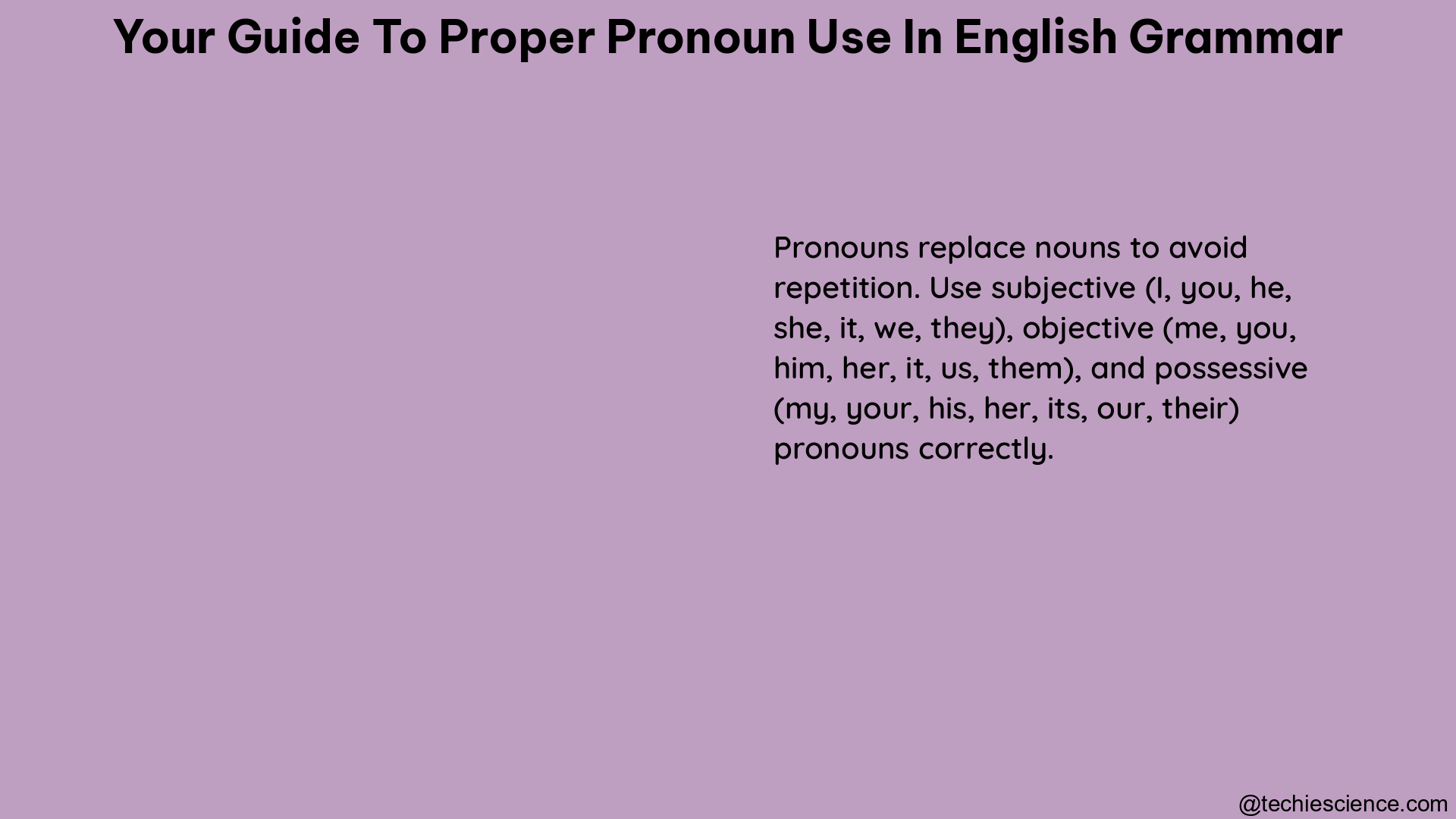Pronouns are essential components of the English language, serving as substitutes for nouns in sentences. Proper pronoun use is crucial for effective communication, especially when referring to individuals with diverse gender identities. This guide provides detailed explanations, examples, and best practices for using pronouns correctly and respectfully.
What Are Pronouns?
Pronouns are words that replace nouns in sentences, such as “you,” “we,” or “they.” They are part of a person’s identity, just like names, and it is essential to learn and use preferred pronouns rather than making assumptions based on appearance. Pronouns can be classified into different categories based on their function in a sentence.
Common Pronoun Sets and Their Meanings

- He/Him/His: These pronouns can refer to people who identify as boys or men but are not limited to male people. They are considered masculine pronouns.
- She/Her/Hers: These pronouns refer to people who identify as girls or women but are not limited to female people. They are considered feminine pronouns.
- They/Them/Their: This set has a rich history as a gender-neutral singular pronoun and is often used when the gender pronouns are unknown or when referring to individuals who identify outside the gender binary.
- Ze/Hir/Hirs: This set comes from the trans community and is another gender-neutral pronoun set. It is less commonly used but is gaining recognition.
Using Pronouns Correctly
Pronouns can serve different functions in a sentence, and it is essential to use them correctly to ensure clear and effective communication.
Subject Pronouns
Subject pronouns are used when the pronoun is the subject of the sentence. Examples include “I,” “he,” “she,” “we,” and “they.”
- “She is going to the park.”
- “They are studying for the exam.”
Object Pronouns
Object pronouns are used when the pronoun is the object of the sentence. Examples include “me,” “him,” “her,” “us,” and “them.”
- “The teacher called on him.”
- “I gave the book to them.”
Possessive Pronouns
Possessive pronouns are used to show ownership. Examples include “my,” “his,” “her,” “our,” and “their.”
- “That is her car.”
- “Their house is down the street.”
Reflexive Pronouns
Reflexive pronouns are used when both the subject and object of a verb are the same person or thing. Examples include “myself,” “herself,” and “themselves.”
- “She bought herself a new dress.”
- “They made themselves a sandwich.”
It is important to note that the use of pronouns can vary depending on the context and the individual’s preferences. Paying attention to the specific pronoun usage in a sentence can help ensure clear and respectful communication.
Best Practices for Inclusive Pronoun Use
To create a more inclusive and respectful environment, it is essential to follow these best practices for pronoun use:
-
Ask and Respect: Always ask individuals about their preferred pronouns and respect their choices. This shows that you value their identity and are committed to using their correct pronouns.
-
Practice and Correct: Practice using the correct pronouns, and if you make a mistake, apologize and correct yourself. This demonstrates your willingness to learn and improve.
-
Use Pronouns in Introductions: Include your own pronouns when introducing yourself or in name tags to normalize the practice and create a welcoming space.
-
Avoid Assumptions: Do not assume someone’s gender or pronouns based on their appearance or name. This can lead to unintentional misgendering and disrespect.
Examples and Scenarios
- Using Singular “They”:
-
“Alex is substituting for me today, and they are an incredible mathematician.”
-
Correcting Mistakes:
-
“Sorry, they are one of my science students.” (after being corrected)
-
Introducing with Pronouns:
- “Hi, I’m Wren and my pronouns are they/them.”
These examples demonstrate how to properly use pronouns in various situations, including when referring to individuals with unknown or non-binary gender identities.
Conclusion
Proper pronoun use is essential for respectful communication and creating inclusive environments. By understanding the different types of pronouns, practicing correct usage, and respecting individuals’ preferences, we can foster a more welcoming and accepting society.
References
- Pronouns: A Guide from the North Dakota Department of Health
- Pronouns Guide from GLSEN
- Pronoun Usage from GrammarBook.com
- Gender Pronouns: What They Are and How to Use Them from Grammarly

The lambdageeks.com Core SME Team is a group of experienced subject matter experts from diverse scientific and technical fields including Physics, Chemistry, Technology,Electronics & Electrical Engineering, Automotive, Mechanical Engineering. Our team collaborates to create high-quality, well-researched articles on a wide range of science and technology topics for the lambdageeks.com website.
All Our Senior SME are having more than 7 Years of experience in the respective fields . They are either Working Industry Professionals or assocaited With different Universities. Refer Our Authors Page to get to know About our Core SMEs.